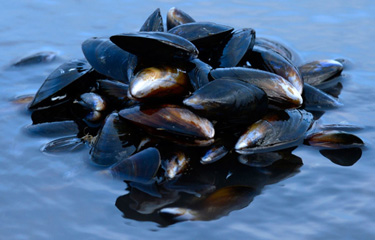Scotland recently published its annual shellfish-production figures, and they did not make for happy reading for the country’s mussel- and oyster-growers.
Production of blue mussels (Mytilus edulis) decreased by 15 percent to 5,661 metric tons (MT) in 2020, the lowest figure for a decade, and Pacific oyster (Crassostrea edulis) production decreased by 33 percent to just under three million shells.
The Scottish shellfish farming industry is now estimated to be worth approximately GBP 6.1 million (USD 8.5 million, EUR 7.1 million) at first-sale value, a decrease of 23 percent from 2019.
The decline was blamed largely on economic fallout from the COVID-19 pandemic, with many businesses reporting no table trade while the hospitality sector was in lockdown during much of 2020. However, according to retailer Tesco, sales of its mussels – which are mostly sold processed in sauce – rose by 20 percent compared to the previous year, thanks to higher demand for easy-cook and ready-to-eat products.
In 2016, the Scottish seafood sector launched an ambitious growth strategy for aquaculture, Vision 2030, which included a goal for mussel production to increase to around 21,000 MT per year. In order to achieve this aim, the sector needed to address some significant issues, including an unreliable spatfall, the presence of fouling organisms on shells, and shell breakage, according to the strategy outline.
The mussel industry is now working with researchers at the University of Stirling’s Institute of Aquaculture, led by Stefan Carboni, to look at ways to overcome these.
The shell-fouling organism tubeworm (Pomatoceros triqueter) can be a major problem for mussel farmers, resulting in losses estimated at GBP 500,000 (USD 695,000, EUR 807,000) per year. They form hard, calcareous white tubes on mussel shells which are virtually impossible to remove. The tubeworms make mussels less pleasing to customers due to their odor when cooked, and they damage vacuum packaging. As a result, fouled mussels are discarded.
An innovative project has just been launched with support from Shetland Mussels and the Sustainable Aquaculture Innovation Centre (SAIC) to develop a rapid diagnostic tool for the presence of P. triqueter DNA in plankton and on shell swab-samples. The tool could be adapted to detect other organisms and have global application.
“Molecular diagnostic techniques are already common on finfish farms, but not in the shellfish sector. We hope that such a tool will enable mussel producers to make informed decisions about how to manage their crop to avoid tubeworm or clean it at the larval stage, when it is more manageable,” Carboni told SeafoodSource.
SAIC CEO Heather Jones said the project is an example of pioneering research that supports further sustainable growth to meet the global demand for protein.
“New data-led techniques such as this DNA diagnostic tool can help to drive the entire industry forward, with benefits spanning the environment, businesses operating in the sector, and the end-consumer,” she said in a press release.
A solution to strengthening mussel shells is also being investigated by Carboni and his team, with a project due to start in September in collaboration with Fassfern Mussels, the Scottish Shellfish Marketing Group, The Fishmongers’ Company, the Association of Scottish Shellfish Growers, and SAIC.
Weak shells are a problem for the industry because they cause breakages and cannot be incorporated into vacuum-packs. It is estimated that they cost the sector around 2 percent of its average annual output.
This project aims to discover whether genetics, environmental conditions, the harvesting process, or a combination of factors affect shell strength.
“Low salinity for example, affects the mineral properties of water and could compromise shell strength. Also, some species of mussels such as Mytilus trossulus and their hybrids are also suspected of having naturally weaker shells,” Carboni said. “Understanding what we are dealing with could help with the development of a selective breeding program in [the] future.”
Depending on initial findings from the research, he hopes that the project could develop a molecular tool to assess juvenile mussel shells for strength, a location screening system for mussel farms, or a new process for harvesting.
“Once we have determined the variables, we can start to develop remedies, protect jobs, create new products, and develop a more efficient and sustainable sector,” he said.
Association of Scottish Shellfish Growers CEO Nick Lake said the need to have a sustainable basis upon which to develop the full potential of the mussel industry is urgent.
“By harnessing the advanced scientific techniques available through the Stirling University research group, we hope to rapidly unlock the answers to some of the fundamental questions regarding the selection of natural blue mussel stocks which are optimal for cultivation in Scotland," he said.
Photo courtesy of Scottish Shellfish







